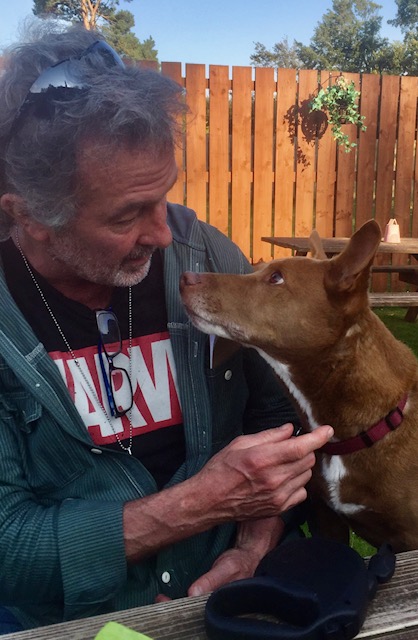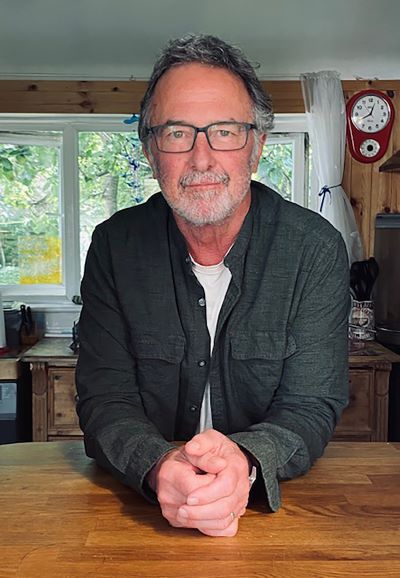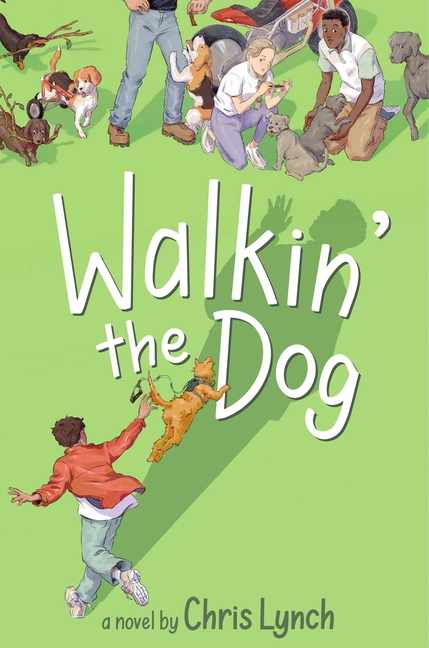From Teaching to Writing

TeachingBooks asks each author or illustrator to reflect on their journey from teaching to writing. Enjoy the following from Chris Lynch.
Let It Rip
by Chris Lynch
Teaching is, at its best, a collaborative act. We should always be learning from each other. I teach in the Creative Writing MFA program at Lesley University. The workshop model, which is the core of everything we do, involves everybody marking up everybody else’s writing. We take this process quite seriously. Giving one’s all to this task is a sort of noble contract between each writer in the program and all their peers. I am forever reminding them that—in addition to being the thing that we all owe to one another—reading, analyzing, and responding to your peers’ work is going to teach you at least as much about the craft as having your own work-shopped will.
I personally have learned more from my students about point of view than I ever did during my own formal education.
Regarding what we can give to students of creative writing, there has always been lively debate about whether we can teach this stuff at all. That debate will not be ending anytime soon, and it certainly won’t be ending here. However, what we definitely can do as teachers is to channel the best practices that have been given to us on our own long journey to here.
I did not receive a lot of let-it-rip type of creative encouragement when I was young but/so what I got still stands out. In seventh grade at Blessed Sacrament school in Jamaica Plain (Boston), I had an English teacher named Sister Elizabeth. She tasked us with writing stories…and that was about it. Parameters, there were none. The strict adherence to correctness the nuns were renowned for was notably absent. Sr. Elizabeth was only interested in unlocking and advancing whatever creative impulses we had.
The result was thrilling. Caution went with the wind, and I went with the comedy. For the first time ever, I put real effort into writing funny. My recollection of the quality of the product may be a tad rosy, but that’s barely even part of the point here. My recollection of the experience itself remains spot on and exhilarating to this day. (And yes, the story was hilarious, btw.)

I bring the Sr. Elizabeth lesson to my students today. Depending on the individual, there usually comes a point somewhere in the process where I feel the need to tell them, let it rip. Don’t be cautious, don’t be careful, don’t be safe. Let yourself be messy, we can fix that later. But in your quest to find the special something that only exists in your writing, you have to take this risk. Scare yourself. Be funny, be tragic, be dangerous. Hurt your reader. Hurt yourself. If the writing has honesty and singularity within it, you’ll both be okay in the end.
If you someday submit that piece of writing for the approval of the wider world, you may get a response saying, hey, this piece is rather mad, unsettling, slightly chaotic and disconcerting…but there is something here. Maybe we should talk. You will never get the response that says, hey this piece is lifeless, devoid of any humor, surprise or human jeopardy. But it is very well punctuated, so, send more of it. That letter is not coming.
Building on the work of Sr. Elizabeth, I have likewise tried to bring all the best experiences of working with many (many, many) editors over my career to my own students. Editors and teachers share a lot. And it is important to take a person’s writing, digest it, understand it, and return it with commentary that you believe helps the writer get right back to the keyboard. We are here to help them become their own writer, rather than a mentor’s idea of what a writer should be. I never suggest a line that doesn’t sound to me like it is in the writer’s own voice. We owe them that for opening their hearts to us.
It extends beyond humanity, even. Our subconscious is the accumulation of everything we have ever processed in our lives. Every song, every scent, every car crash, every fright, every perfect arancini. We are all, always, learning. From everyone and everything. There’s no better example, for me, than my book, Walkin’ the Dog (Simon & Schuster, 2024). There is a whole lifetime of dog learning littered among those pages, and it was a treat to be able to indulge it. As my main character’s sister tells him late in the book, “All dogs are guide dogs, in the end.” We could say that about a lot of people, places, and things, really.
Books and Resources

TeachingBooks personalizes connections to books and authors. Enjoy the following on Chris Lynch and the books he’s created.
Listen to Chris Lynch talking with TeachingBooks about the backstory for writing Walkin’ the Dog. You can click the player below or experience the recording on TeachingBooks, where you can read along as you listen, and also translate the text to another language.
- Listen to Chris Lynch’s name pronunciation
- Enjoy the activity guide for Walkin’ the Dog
- Discover Chris Lynch’s page and books on TeachingBooks
- Visit Chris Lynch on his GoodReads page
Explore all of the For Teachers, By Teachers blog posts.
Special thanks to Chris Lynch and Simon & Schuster for their support of this post. All text and images are courtesy of Chris Lynch and Simon & Schuster and may not be used without expressed written consent.



Leave a Reply